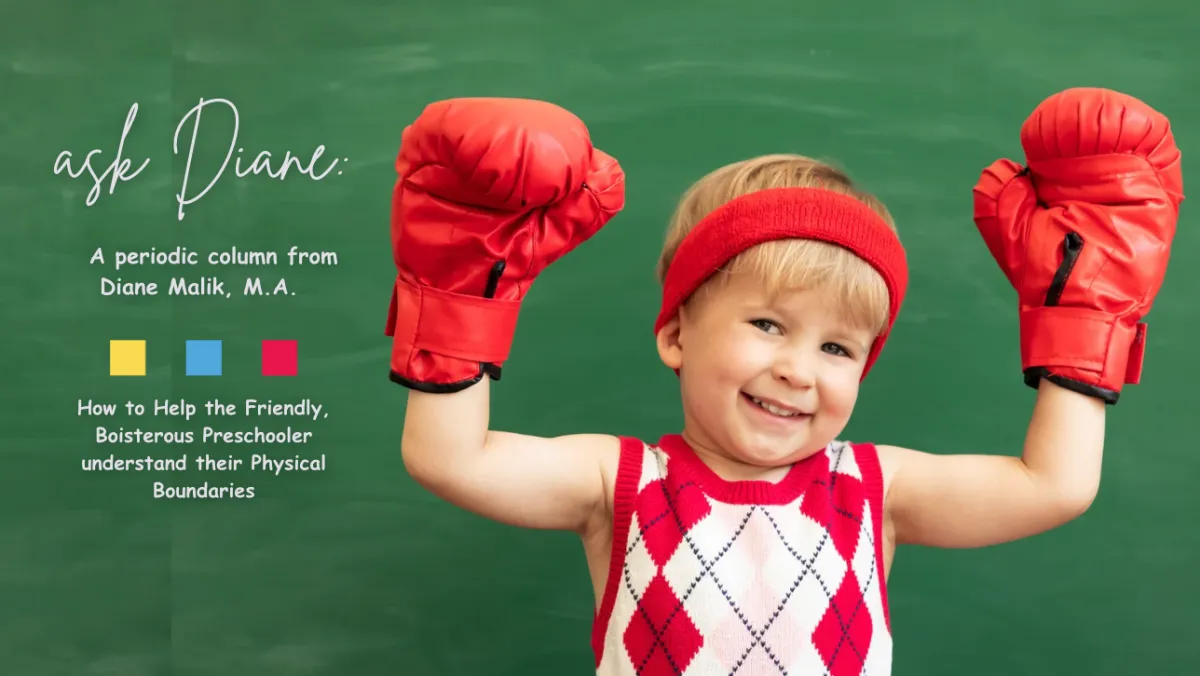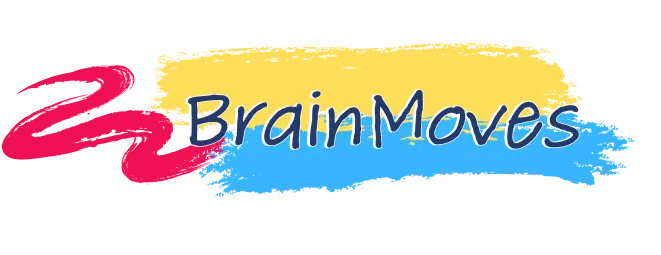
Ask Diane, My Boisterous Child
Dear Diane:
I am reaching out because I am concerned about my preschooler, Luke, who is displaying some challenging behaviors that are becoming increasingly difficult for us to manage. Luke is often restless and hyperactive, frequently running around and bumping into other children and even walls. It seems like he doesn’t fully understand how to play nicely with others, which often leads to tears or even accidentally injuring other children during playtime. He isn’t even unkind; he seems to just be loud, boisterous, and rough and tumble all day until he falls asleep like a log, exhausted at night.
Despite my best efforts to teach Luke to play gently and share, he seems to struggle with these concepts more than his siblings. This behavior is leading to frustration by teachers and concern or avoidance by more reserved classmates. I fear he is going to become socially isolated from all but the roughest, big children, and he has already been marked a troublemaker in daycare.
I want to help Luke learn how to interact more positively with other children and manage all that energy, but scolding, punishments (like time-outs), and reward charts barely make a dent in his whirlwind.
Could you please provide guidance on how we can help Luke be more mindful of his body and how he plays with others?
Signed, Tired in Toledo
Thank you for reaching out and sharing your concerns about Luke. It’s clear that you care deeply about his well-being and socializing; I appreciate you seeking support.

It's not uncommon for young children to show high levels of energy and physical play. However, restlessness, carelessness, and a lack of awareness of his body in space can be a sign of stuck developmental reflexes around gross motor skills and visual processing. It can be a sign of spatial integration issues and/or visual processing problems, in which a child doesn’t process what they see around them. This can result in bumping into other people and objects.
Children often explore their surroundings and test boundaries as they learn to navigate social interactions. However, it sounds like Luke is facing some challenges that may be affecting his ability to play cooperatively with peers and to feel secure in their environment. This can cause anxiety, whether he is aware of it or not. When some children are anxious, they feel better when they move. His anxiety may be coming out as boisterous play. Luke would benefit from BrainMoves to help him with awareness of his body and how it moves in space, and movements can help him calm down.
Here are a few strategies that might help Luke develop more positive play skills and bodily awareness:
1. Structured Playtime: Provide opportunities for structured activities that channel Luke's energy in a positive way. Activities like obstacle courses or movement games can help him engage physically while learning to cooperate with others. Create clear boundaries for acceptable and unacceptable play. Because this requires listening, do the Koala Cub to help the child focus on what is being said. Do the Monkey and the Kitten Arching movements to help his proprioceptions - his awareness of his body in space.
2. Modeling Behavior: Show Luke how to play with others by participating in directed play. You can demonstrate turn-taking, sharing, and gentle play. It can also be beneficial to encourage them to participate in group activities, such as sports or team games, where they can learn to interact with peers in a structured setting. Keep in mind, children learn by watching us. If we ask for inside voices but then shout across the house at our partner to bring us something, then we are not modeling the behavior we would like to see.
3. Targeted Praise and Positive Reinforcement: When Luke engages in appropriate play or interacts nicely with peers, be sure to acknowledge and praise his behavior. Positive reinforcement can be powerful in encouraging him to repeat those actions. Avoid saying, “Luke, you are a good boy because you did something…” That suggests that when he makes a mistake and his behavior isn't “good” he might not be lovable or good either. Instead, notice and admire specific parts of his behavior. “I noticed you gave Myra your box of crayons very carefully and didn't spill or break any. Thank you! It is easier to draw with whole crayons, isn't it?”
4. Calming Techniques: Teach your child a few simple, calming BrainMoves movements like the Blowfish. Little bodies can also practice breathing deeply and relaxing by blowing bubbles - outside where spills don’t matter! and trying to make the biggest one or the most at one time. This encourages deep breathing and belly breathing. Both can calm the fight or flight instincts.
5. Collaboration with Teachers: Let Luke’s teachers know what you are working on with him. They may have insight into techniques that have helped him in the classroom, or they might be able to create some accommodations to help manage the acting out. His teachers can help reinforce positive behavior in the classroom setting and can also do the BrainMoves that work at home with him in the classroom. This builds consistency.

It might also be helpful to establish a routine that provides both structured and unstructured playtime, allowing Luke to learn self-regulation while still having opportunities for free play.
If you would like, you can book a one-on-one session with me. Together, with positive parenting, BrainMoves, and consistent boundaries, we can work to develop additional strategies tailored specifically for Luke's needs.
If you would like to learn all the BrainMoves and receive 5+ hours of self-paced video learning about why the BrainMoves movements work, how to choose the right one for each situation, and how to make it fun for your child, ACT TODAY.
Use the code SUMMER2025 to take $350 off the purchase price of the course. You get lifetime access to all of the content and can learn at your own pace.
https://thebrainmovescourse.com 🌸
Sale ends July 31st, so purchase today!


